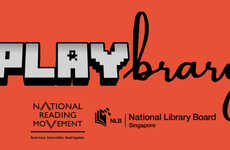
Shelby Lee Walsh — September 18, 2009 — About
References: network.nationalpost & exploitingchaos
Jeremy Gutsche was recently approached by the National Post to answer a single question of what book he thinks that all students should have to read before they graduate high school. In the article, Jeremy explains why Paul Arden’s “It’s Not How Good You Are, It’s How Good You Want to Be” is his personal top pick and how it influenced his own book EXPLOITING CHAOS.
By Brad Frenette
With September here and class back in session, The Afterword asked several Canadian authors to answer this question: If you could add one book to the high school curriculum – a book which students couldn’t graduate with until it was read – what would it be, and why?
Here, Jeremy Gutsche discusses his pick for the curriculum: “It’s Not How Good You Are, It’s How Good You Want to Be” by Paul Arden.
With its half visual, half text design, this book is a captivating digest of inspiration. Arden’s message is about framing your perspective in a positive light and setting your aspirations extraordinarily high. He teaches readers that they don’t have to become a cog in a wheel and that ambition and determination can have monumental results. Plus, he’s entertaining. His subtitle notes “The world’s bestselling book by Paul Arden” … because at the time, it was his only book.
For context, Arden spent the majority of his life at the top of the ad world as the creative director at Saatchi & Saatchi. His unique outlook helped define many of the largest ad campaigns that we recognize today.
The visual design of Arden’s book was my inspiration for Exploiting Chaos. Each page of text includes visual imagery and a bullet point takeaway. The text is colorful, concise and bold. This format is far more suited to the way that the internet has conditioned younger generations to read. The end result is that Arden created a book that you leave on your coffee table and pick up any time you want to think big or dream your path to the next level.
The Unread: Jeremy Gutsche on Paul Arden’s “It’s Not How Good You Are, It’s How Good You Want to Be”
By Brad Frenette
With September here and class back in session, The Afterword asked several Canadian authors to answer this question: If you could add one book to the high school curriculum – a book which students couldn’t graduate with until it was read – what would it be, and why?
Here, Jeremy Gutsche discusses his pick for the curriculum: “It’s Not How Good You Are, It’s How Good You Want to Be” by Paul Arden.
With its half visual, half text design, this book is a captivating digest of inspiration. Arden’s message is about framing your perspective in a positive light and setting your aspirations extraordinarily high. He teaches readers that they don’t have to become a cog in a wheel and that ambition and determination can have monumental results. Plus, he’s entertaining. His subtitle notes “The world’s bestselling book by Paul Arden” … because at the time, it was his only book.
For context, Arden spent the majority of his life at the top of the ad world as the creative director at Saatchi & Saatchi. His unique outlook helped define many of the largest ad campaigns that we recognize today.
The visual design of Arden’s book was my inspiration for Exploiting Chaos. Each page of text includes visual imagery and a bullet point takeaway. The text is colorful, concise and bold. This format is far more suited to the way that the internet has conditioned younger generations to read. The end result is that Arden created a book that you leave on your coffee table and pick up any time you want to think big or dream your path to the next level.
Trend Themes
1. Visual Text Design - Disruptive innovation opportunity: Explore innovative ways to present information through a combination of visuals and text, appealing to younger generations and the internet-savvy audience.
2. Positive Framing - Disruptive innovation opportunity: Develop products or services that promote positive thinking and encourage individuals to set ambitious goals.
3. Entertaining Education - Disruptive innovation opportunity: Combine entertainment and education to create engaging content that captivates the audience and delivers valuable insights.
Industry Implications
1. Publishing - Disruptive innovation opportunity: Integrate visual elements, such as graphics or multimedia, into traditional publishing to enhance the reading experience.
2. Education - Disruptive innovation opportunity: Incorporate positive psychology principles into educational materials to motivate and inspire students in pursuing their goals.
3. Advertising - Disruptive innovation opportunity: Leverage the power of storytelling and captivating visuals in advertising campaigns to connect with consumers on a deeper level.
3
Score
Popularity
Activity
Freshness
























